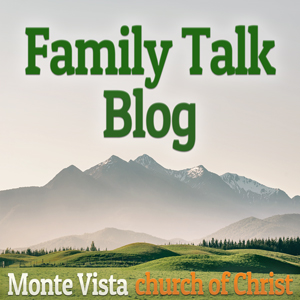Throughout Israel’s history, God guided His people to construct monuments for events and experiences He wanted them to remember. He even supplied a continuous reminder of His promise to Noah in the form of a rainbow. We can find these memorials and how they were to be observed in the pages of the Bible. When the day came for the spiritual Kingdom of Christ to replace Israel’s physical nation, the memorial type changed.
Before Jesus’ ultimate sacrifice on the cross, the physical memorial of Sabbath reminded Israel of God’s creative and saving power. “For in six days the LORD made the heavens and the earth, the sea, and everything in them, and rested the seventh day. Therefore the LORD blessed the Sabbath day and hallowed it” (Exodus 20:11). And, “Remember that you were a slave in the land of Egypt, and the LORD your God brought you out from there by a mighty hand and by an outstretched arm; therefore the LORD your God commanded you to keep the Sabbath day” (Deuteronomy 5:15).
That God created the universe in six days and rested on the seventh is remembered today, not because of Sabbath observance but because Christ was the builder (Colossians 1:15-20). The specific remembrance in Deuteronomy is not ours. We were not slaves in Egypt, therefore, that does not apply to us. We study and learn from it, but no part of the Sabbath Law applies to us. As Israel entered Canaan, God commanded a memorial of twelve stones to be set up on the Jordan River banks. It was to remind Israel that “Because the waters of the Jordan were cut off before the ark of the covenant of the LORD; when it crossed the Jordan, the waters of the Jordan were cut off” (Joshua 4:7). Israel crossed Jordan into the promised land on dry ground. The physical monument to a physical crossing has disappeared from Jordan’s banks. We look forward to crossing through death’s portal into our promised land.
Today we have a single memorial and specified observances to center our minds and affections on the Christ who died for us and the work He commands for us. There is no commandment like Israel had, “Remember the sabbath day, to keep it holy” (Exodus 20:8-11). Instead, Jesus gave one command, “This is My body which is given for you; do this in remembrance of Me” (Luke 22:19). And instead of specific directions, examples are given of saints observing the memorial. We read of them assembling on the first day of the week and participating in activities as Christ directs.
The phrase The Lord’s Day, or more precisely, “on the Lord’s day” (ἐν κυριακῇ ἡμέρᾳ), occurs only once in the New Testament (Revelation 1:10). The phrase used most often is “the first day of the week.” Some regard it as the festival of the Lord’s resurrection. It is not to be confused with “The Day of the Lord,” a day of judgment (1 Thessalonians 5:2). It is not “the day of Christ” (KNJ, NKJV) or “the day of the Lord” (NASV, ESV), which is His second coming (2 Thessalonians 2:2).
In all the “first days” from creation until the end of time, there is no day to compare with the day the Son of God returned to life. It was a day that witnessed the power of Christ over death and gave hope of eternal life to a sinful population. We have the testimony, recorded in our Bibles, of the many miracles performed by God’s servants throughout Bible times. Still, none compare to the departed spirit returning to a lifeless body. The gospel writers describe that day for us. “But on the first day of the week, at early dawn, they came to the tomb bringing the spices which they had prepared. And they found the stone rolled away from the tomb” (Luke 24:1-2). That alone was a miracle. Then the women heard the angel speaking, “He is not here, for He has risen, just as He said” (Matthew 28:6-7).
Mark identifies the first person to see the risen Christ this way, “Now after He had risen early on the first day of the week, He first appeared to Mary Magdalene, from whom He had cast out seven demons” (Mark 16:9). Later that day, He appeared to two disciples on the road to Emmaus (Luke 24:13-33). And afterward, “When it was evening on that day, the first day of the week, and when the doors were shut where the disciples were, for fear of the Jews, Jesus came and stood in their midst and said to them, “Peace be with you” (John 20:19).
Seven weeks later, “When the day of Pentecost had come, they were all together in one place” (Acts 2:1). The Lord chose that first day of the week (Pentecost is always on the first day) to send the Holy Spirit and present the first sermon, preaching the forgiveness of sin through the blood of the risen Christ. By the end of that day, thousands of souls were saved, and the church that Jesus promised to build (Matthew 16:18) existed. The saints continue to meet on the first day of each week to worship and praise God and His Son. Are you part of the assembly that celebrates the Lord and Christ on His Day?
